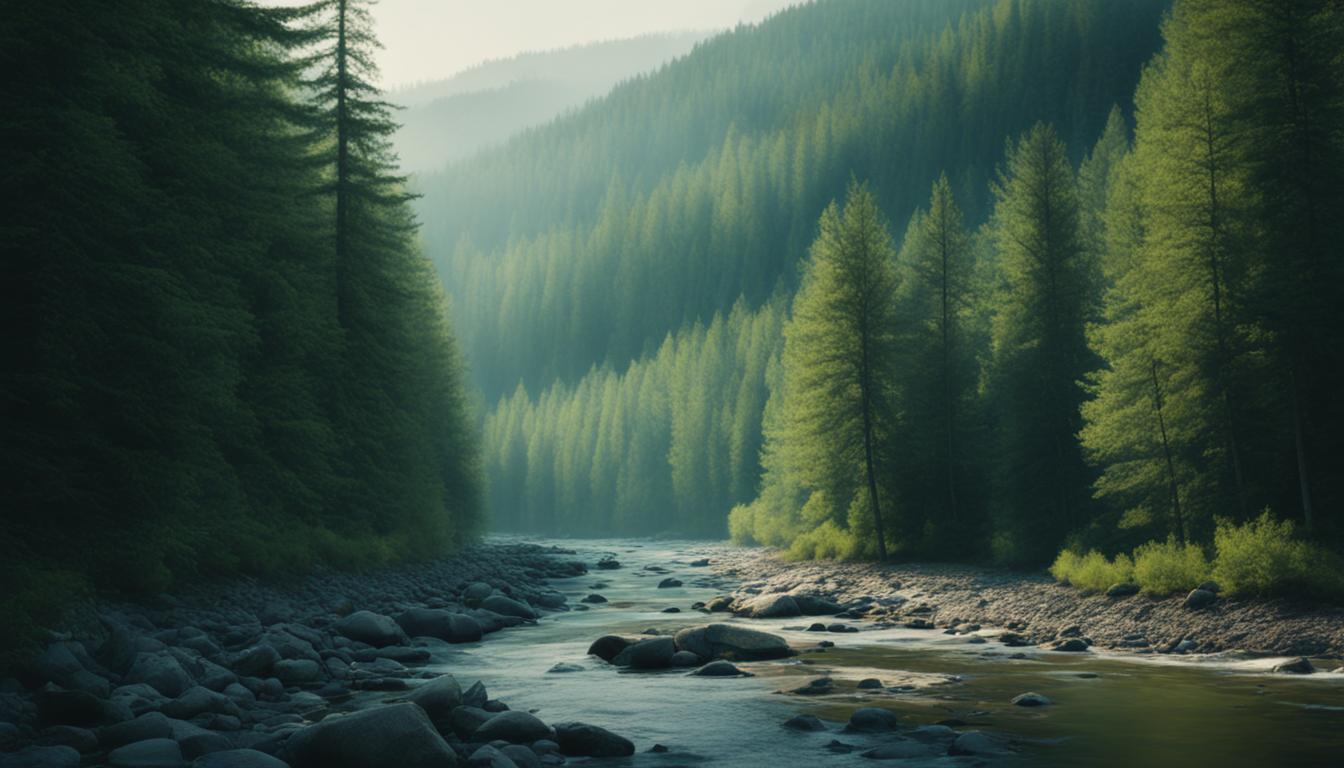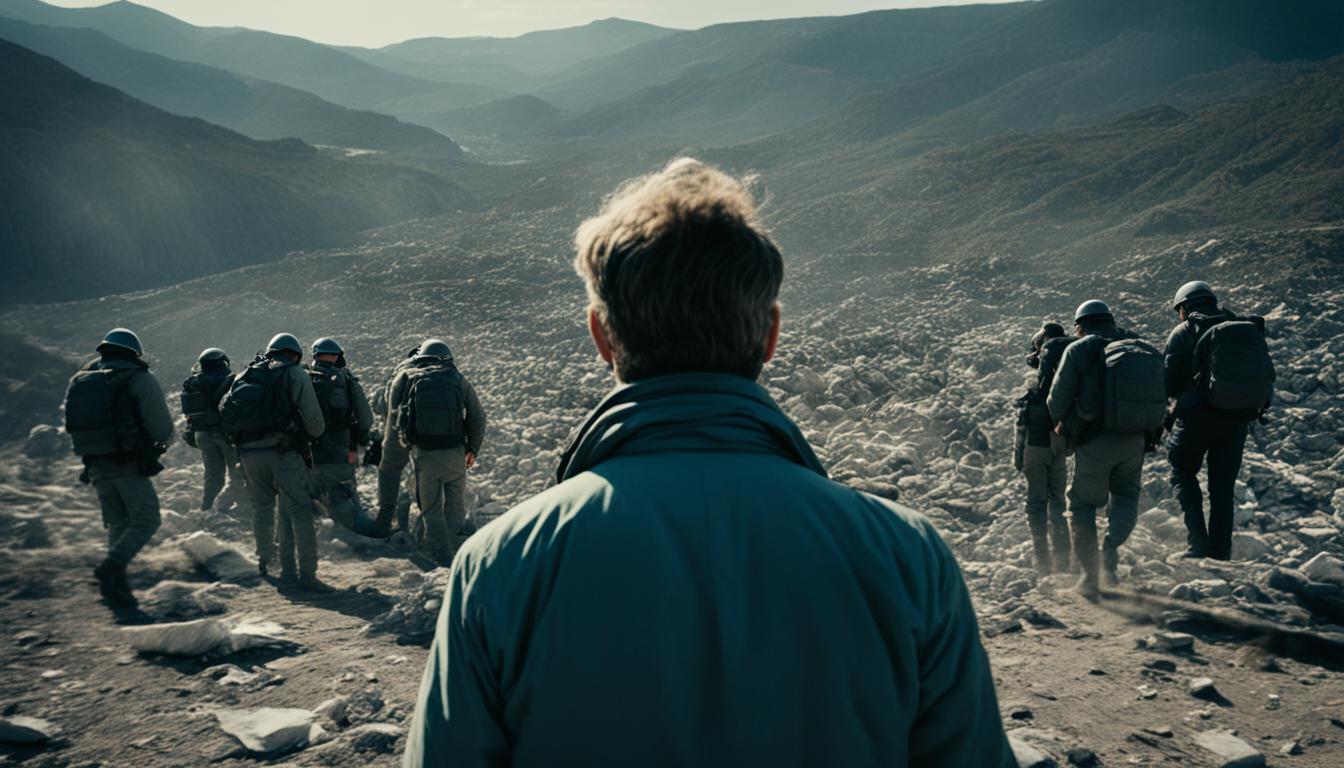The origin of the word photography means “drawing with light.” We believe that photography has the power to capture imagery that allows us to witness the beauty and challenges of the natural world. It plays a vital role in wildlife and environmental conservation by exposing issues and documenting the efforts to protect wildlife and their habitats. Wildlife photographers like Shannon Wild, Rodney Nombekana, and Aaron Gekoski use their photography to inform and educate a broad audience, inspiring positive change.
Key Takeaways:
- Environmental documentary photography raises awareness and inspires action towards wildlife preservation and ecological well-being.
- Photographers highlight the impacts of environmental issues such as deforestation and climate change through powerful images.
- Environmental photography documents changes in the environment and emphasizes the need for sustainable development.
- Iconic environmental photographs have had a global impact, driving collective action towards a more sustainable future.
- Environmental photography grants support photographers who document environmental issues and solutions in their local communities.
The Power of Environmental Documentary Photography
Environmental documentary photography goes beyond capturing beautiful images of nature; it serves as a tool to raise awareness and inspire action. Through their photos, photographers highlight the interplay between human civilization and the natural world, showcasing the impacts of environmental issues such as deforestation and climate change. These powerful images have the ability to spark emotions, provoke thought, and ultimately drive positive change towards conservation efforts.
Environmental documentary photographers have a unique ability to capture the essence of the natural world and its fragile ecosystems. They use their skills to document both the awe-inspiring beauty of nature and the devastating consequences of human activities. By focusing their lens on environmental activism and eco-conscious photography, these photographers bring attention to urgent issues and foster a deeper understanding of the need for wildlife preservation and environmental conservation.
Through their work, environmental photographers create thought-provoking images that compel viewers to take action. These photographs serve as visual testimonials, showcasing the delicate balance between human society and the environment. By documenting the consequences of deforestation, pollution, habitat destruction, and other environmental challenges, photographers play a vital role in shaping public opinion and motivating individuals to make eco-conscious choices.
The Impact of Nature Photography
Nature photography has the power to captivate audiences and evoke a sense of wonder and connection with the natural world. By showcasing the beauty of the Earth’s diverse landscapes and wildlife, photographers inspire awe, fostering a love and appreciation for the environment. This emotional connection is essential in motivating individuals to become environmental activists and engage in conservation efforts.
In the words of renowned nature photographer Ansel Adams, “A true photograph need not be explained, nor can it be contained in words.”
Environmental documentary photographers use their art to tell stories and convey messages about the urgent need for environmental protection. Through their images, they shed light on the interconnectedness of all living beings and the delicate balance that must be maintained for the survival of our planet. These photographers act as visual storytellers, bringing attention to the pressing issues we face and inspiring viewers to become eco-conscious advocates.
The Role of Wildlife Preservation Images
Wildlife preservation images play a crucial role in documenting endangered species, fragile ecosystems, and conservation efforts around the world. These photographs not only raise awareness but also serve as important educational tools, highlighting the significance of protecting biodiversity and preserving habitats.
- They capture the vulnerability and beauty of endangered species, evoking empathy and inspiring action.
- They document the efforts of environmental activists and organizations in their quest for wildlife preservation.
- They provide a visual record of the impact of environmental issues, such as climate change and pollution, on wildlife populations.
Through their lenses, wildlife photographers capture fleeting moments in the natural world, transporting viewers to stunning landscapes and enabling them to witness the intricate relationships between species. These images serve as a call to action, urging each individual to become an environmental activist and play a part in preserving our planet for future generations.
The Role of Environmental Photography in Conservation
Environmental photography plays a crucial role in conservation by documenting the changes our environment undergoes and the urgent need for action. It showcases the consequences of human actions on the environment, such as deforestation and pollution, while also celebrating the beauty of the natural world.
Environmental photographers capture the nuances of these issues through various types of photography, including environmental portraiture, natural history, and marine photography. Their work helps to shed light on the importance of preserving our planet for future generations.
Preserving the Beauty of the Natural World
Through sustainable development photography, environmental photographers capture the magnificence of our natural world. These images not only provide visual documentation of endangered species, pristine landscapes, and delicate ecosystems but also foster a deep appreciation for nature’s wonders. By showcasing the breathtaking beauty of our planet, photographers inspire others to take action.
“Conservation is the preservation of human life on Earth, and that, above all else, is worth fighting for.” – Paul Nicklen
Documenting the Urgent Need for Action
Conservation documentary art encapsulates the urgency of environmental degradation. Photographers capture landscapes scarred by deforestation, oceans polluted with plastic, and habitats destroyed by human activity. These powerful images serve as a call to action, galvanizing individuals, organizations, and policymakers to address the pressing issues threatening our planet’s health.
| Type of Photography | Description |
|---|---|
| Environmental Portraiture | Capturing the human connection with nature and the impact of environmental issues on communities. |
| Natural History | Documenting the biodiversity and ecological relationships within ecosystems. |
| Marine Photography | Shedding light on the importance of preserving our oceans and the delicate balance of marine life. |

The captivating image above represents the essence of sustainable development photography, showcasing the harmony and interconnectedness of nature. It reminds us of the fragility of our ecosystems and the urgent need to protect them for future generations.
Iconic Environmental Photographs That Changed the World
Throughout history, certain photographs have had a profound impact on raising global consciousness about environmental issues. These iconic images serve as visual evidence of the urgent need for conservation and have played a key role in inspiring collective action towards building a more sustainable future.
Ansel Adams’ Captivating Landscapes
Ansel Adams is widely recognized as one of the pioneers of environmental photography. His breathtaking landscapes, such as his iconic photograph “Moonrise, Hernandez, New Mexico,” showcased the awe-inspiring beauty of nature and sparked a deep appreciation for the preservation of pristine wilderness. Adams’ mastery of light, composition, and tonal range transformed his photographs into works of art that continue to inspire environmental awareness and admiration for the natural world.The Impact of Industrial Pollution on the Cuyahoga River
The Cuyahoga River, located in Cleveland, Ohio, became a symbol of environmental degradation due to decades of industrial pollution. A photograph taken in 1969 by photojournalist Thomas Ondrey captured the river engulfed in flames after an oil slick ignited. This shocking image helped to expose the dire consequences of unregulated industrial practices and contributed to the creation of the Environmental Protection Agency (EPA) and the enactment of the Clean Water Act. It serves as a stark reminder of the importance of protecting our waterways from pollution.
“The role of photography in environmental conservation is to create a visual argument or evidence that would inspire accountability, policy, or behavior change.” – Florian Schulz
The Devastating Effects of the Deepwater Horizon Oil Spill
In 2010, the Deepwater Horizon oil rig explosion led to one of the most catastrophic environmental disasters in history. The photographs documenting the oil spill’s aftermath, such as those captured by photojournalist Charlie Riedel, revealed the scale of devastation inflicted upon marine life, ecosystems, and coastal communities. These images served as a call to action, highlighting the urgent need for stricter regulations and increased efforts to prevent and respond to such disasters.
| Photographer | Environmental Issue | Impact |
|---|---|---|
| Ansel Adams | Preservation of wilderness | Inspired environmental appreciation and awareness |
| Thomas Ondrey | Industrial pollution | Contributed to the creation of the EPA and the enactment of environmental regulations |
| Charlie Riedel | Oil spills | Raised awareness and prompted efforts for stricter regulations and improved response mechanisms |
Environmental Photography Grants: Spotlighting Activists and Solutions
The field of environmental photography thrives from the support of grants and recognition given to talented photographers. Through these grants, photographers have the opportunity to document environmental issues and solutions within their local communities, shedding light on the challenges we face and the actions being taken to address them. One organization that champions this cause is Vital Impacts, a conservation storytelling nonprofit.

Vital Impacts awards Environmental Photography Grants to photographers who are passionate about capturing and sharing stories that highlight the need for environmental conservation. These grants provide funding and resources for photographers to undertake in-depth projects that bring attention to community-led conservation efforts. By focusing on local stories, these photographers contribute to the broader conversation about environmental challenges and inspire change within their own communities and beyond.
Examples of Environmental Photography Grant Recipients:
| Photographer | Project Focus |
|---|---|
| Musuk Nolte | Documenting the impact of deforestation on indigenous communities in the Amazon rainforest |
| Tailyr Irvine | Capturing the resilience and adaptation of coastal communities facing the threat of rising sea levels |
By supporting these photographers and their projects, organizations like Vital Impacts help to amplify the voices of activists and local communities who are actively working towards environmental solutions. Through their powerful imagery and storytelling, these photographers contribute to the global movement for sustainable development and inspire others to take action.
Conclusion
Environmental engagement is essential for our collective future, and storytelling through photography plays a crucial role in driving awareness, empathy, and action. Through visually captivating images, photographers have the power to bridge the gap between reality and knowledge, fostering a deeper understanding of environmental issues.
By bringing attention to the beauty of our natural world and the challenges it faces, environmental documentary photographers inspire viewers to take action in their own lives and contribute to a more sustainable future. Their photographs serve as a call to arms, reminding us that every individual has a role to play in preservation and conservation.
As viewers, we have the responsibility to engage with the stories these photographers tell. Each picture captures a unique narrative, demonstrating the impact that human actions have on our planet. By immersing ourselves in these narratives, we can cultivate a sense of empathy and develop a greater understanding of our environment’s fragility.
Ultimately, environmental engagement goes beyond the work of photographers. It is a commitment we must all make to protect and preserve our planet. Through storytelling and powerful visuals, environmental documentary photography ignites a spark within us, urging us to take meaningful and impactful action. By embracing this call, we can work together to create a future where human civilization and the natural world coexist harmoniously.
FAQ
What is environmental documentary photography?
Environmental documentary photography is a form of photography that focuses on capturing conservation efforts and highlighting the challenges faced by the natural world. It serves as a tool to raise awareness and inspire action by showcasing the interplay between human civilization and the environment.
How does environmental photography contribute to conservation?
Environmental photography plays a crucial role in conservation by documenting the changes our environment undergoes and the urgent need for action. It showcases the consequences of human actions on the environment while also celebrating the beauty of the natural world.
Can photography inspire positive change towards environmental issues?
Yes, photography has the power to inform, educate, and inspire change. Environmental photographers capture visually captivating images that foster empathy, promote discourse, and construct narratives that bridge the gap between reality and knowledge. Through their work, photographers motivate viewers to take action in their own lives and contribute to a more sustainable future.
What are some iconic environmental photographs?
Some iconic environmental photographs include Ansel Adams’ captivating landscapes, photographs depicting the impact of industrial pollution on the Cuyahoga River, and powerful imagery showcasing the devastating effects of the Deepwater Horizon oil spill. These photographs have had a profound impact on raising global consciousness about environmental issues.
Are there grants available for environmental photographers?
Yes, there are grants available for environmental photographers. Organizations like Vital Impacts, a conservation storytelling nonprofit, award grants to photographers who document environmental issues and solutions in their local communities. These grants provide funding for photographers to undertake in-depth projects that highlight community-led conservation efforts.
What is the role of viewers in environmental engagement?
Environmental engagement is not only the responsibility of photographers but also of every viewer. Every picture tells a story that can lead to meaningful and impactful action. Viewers of environmental photography are encouraged to take action in their own lives and contribute to a more sustainable future.
What Impact Does Conservation Lens Photography Have on the Environment?
Conservation lens photography has a powerful impact on the environment by raising awareness and promoting preservation. Through documentary photography exhibits, stunning images of nature’s beauty and fragility inspire action and change. Viewers are moved to protect and conserve our natural world, making a real difference for future generations.
Source Links
- https://www.all-about-photo.com/photo-articles/photo-article/1403/lens-on-nature-the-power-of-environmental-photography-in-a-changing-world
- https://www.smithsonianmag.com/smart-news/these-stunning-photography-projects-tell-stories-of-conservation-180982245/
- https://kevinrichardsonfoundation.org/through-the-lens-photography-in-conservation/




